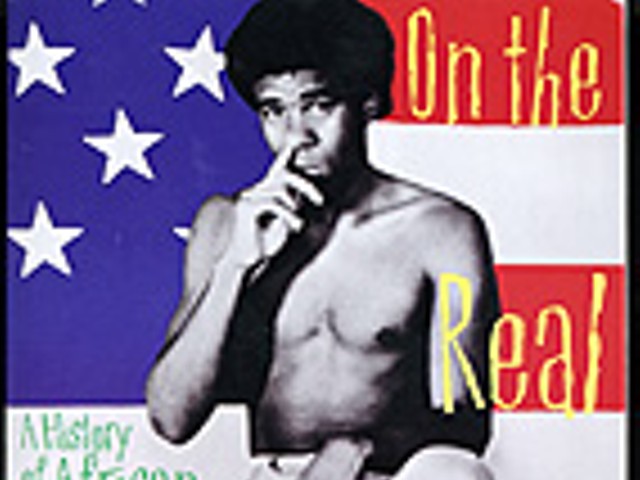The ghost story has returned just in time to save the horror genre from eating itself. Scream and its demented progeny turned self-referential mocking into the dominant style. Being scared was no longer enough; audiences had to be made aware of the deus ex machina of horror. But the phenomenal success of The Sixth Sense and The Blair Witch Project signals a return to old-style chillers, which are drawing more people into theaters than air conditioning.
So what accounts for the relative failure of The Haunting? It has nothing to do with marketing or timing; it’s the nature of the film itself.
A remake of the 1963 psychological thriller, the new Haunting is indicative of the changes in Hollywood after computer-generated imagery became ubiquitous. The interior mind games of the original were replaced by everything-but-the-kitchen-sink special effects. The end result frightened no one, except perhaps studio executives who OK’d the movie’s massive budget.
But the other ghost stories took a different approach: less is more. By curtailing shock tactics and gore, The Sixth Sense and Blair Witch Project allow the fertile imagination of moviegoers to take over. These films offer an intense brand of personalized terror, where audience members not only empathize with the protagonists, but actually see the situation through their specific state of mind.
The distinction between gotcha theatrics and a solid genre film is one David Koepp understands intimately. He’s not only the writer-director of another minimalist ghost story, Stir of Echoes (reviewed this week), but wrote the screenplays for Jurassic Park and The Lost World, the epitome of high-end Hollywood filmmaking. It’s Koepp’s opinion that the technical wizardry afforded today’s filmmakers is both "a blessing and a curse."
"It’s great to have that freedom with stuff like the dinosaur movies," he says, "because you can really create these unbelievable images. But it’s also a curse because there’s an expectation inflation where audiences continually expect new and incredible things, and this is very expensive stuff. If you’re making, as we were, a $12 million movie, you don’t have a great deal at your disposal. So necessity being the mother of invention, you’ve got to think of other ways to tell your story, and the other ways you come up with are invariably more interesting."
In his two films as a writer-director, Koepp has proven that he has no shortage of ideas or invention. The Trigger Effect (1996) tapped into Y2K paranoia even before the term entered the American lexicon. After the computer-controlled infrastructure of Southern California mysteriously goes awry, a nagging panic sets in. Soon the fragile thread of civility is stretched to the breaking point when trusted friends, neighbors, even spouses, take on a sinister air. As for strangers, they automatically become potential rivals for suddenly limited resources, which Koepp’s middle-class characters once took for granted.
Stir of Echoes also looks at an individual’s loss of control over the environment, but this time in a milieu of more limited possibilities. Kevin Bacon’s character, a frustrated musician who toils as a utility worker to support his growing family, has never left the blue-collar Chicago neighborhood that he grew up in.
Extremely cynical about his New Ageish sister-in-law (Illeana Douglas), he agrees to be hypnotized during a party only to prove that he’s impervious to hypnotism. But he dives into his untapped unconscious, and a seemingly innocuous posthypnotic suggestion suddenly transforms his familiar environment into a perilous terrain. For Koepp, this shift in perspective is key to his ghost story.
"Douglas’ character gives him a hard time," explains Koepp, "and says, ‘I opened a door, that’s all. I’m just showing you that there’s more to this world than you think there is.’"
But while Bacon’s character is completely undone by his newfound ability to see into the spirit realm, it’s his wife (Kathryn Erbe) who must deal with his transformation.
"I kept wondering," says Koepp, "if it was more horrifying if it happened to you or to the person that you love the most, so a lot of the story is told from Erbe’s point of view. It was very important to try and create this very believable domestic environment because that would make this all the more credible and therefore more frightening."
Stir of Echoes isn’t the type of story whose linchpin is whether or not a character believes in the supernatural. The film takes for granted the idea that a parallel world exists just beyond our everyday perception, and anyone can suddenly find themselves there. That doesn’t frighten Koepp.
"Ghost stories are so appealing," he explains, "and have been for so long not necessarily because they’re scary, but because they’re reassuring. We want to believe there’s an afterlife because then we don’t have to worry so much about dying, and we want to believe there’s more out there than our boring little suburban world because the thought that there isn’t any is kind of boring and depressing."
There’s an added aspect, represented in Stir of Echoes by a persistent ghost who desperately wants her story to be told: justice for unpunished earthly crimes.
"Because maybe in the afterlife," suggests Koepp, "you can settle up all your accounts."





